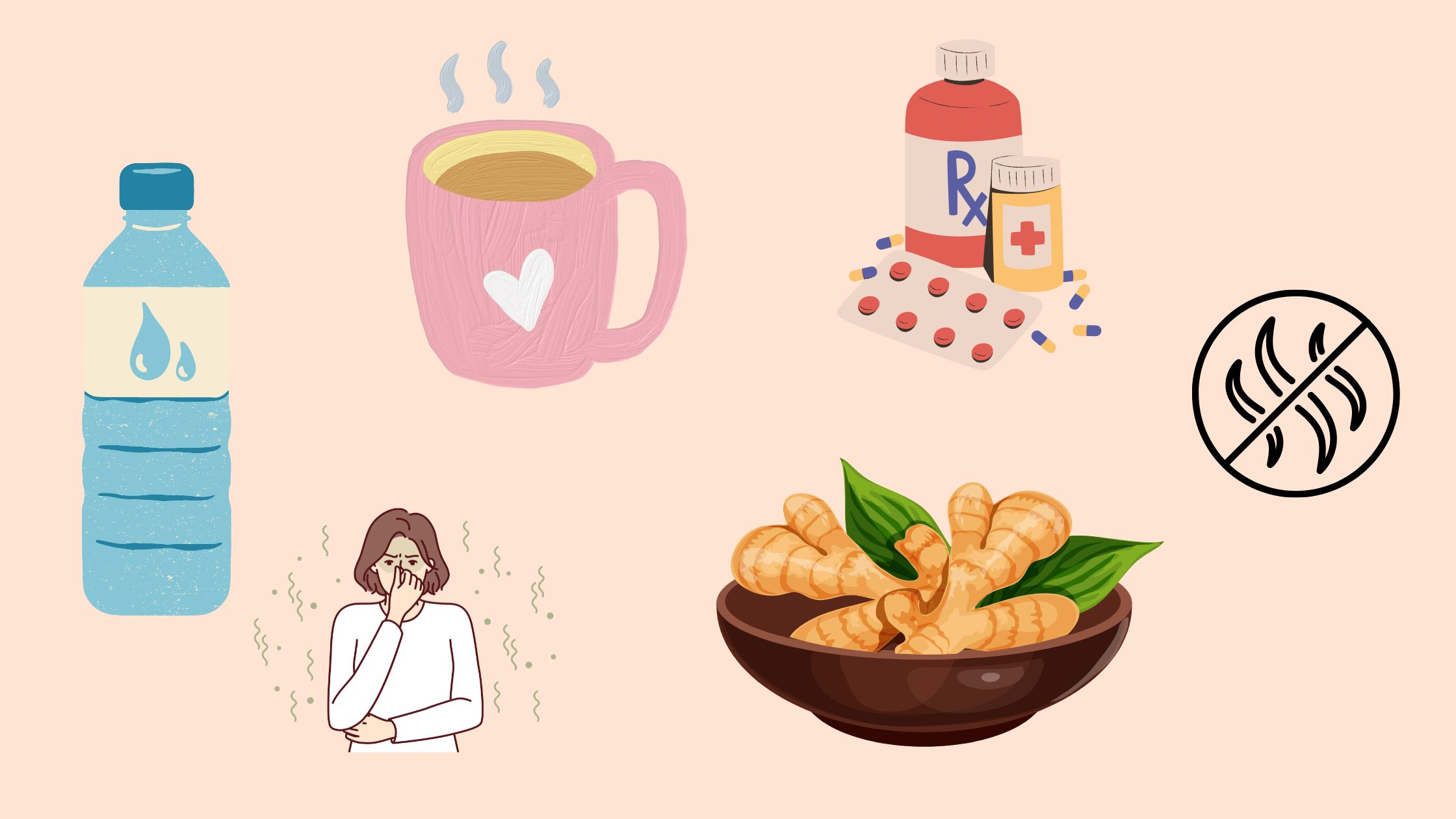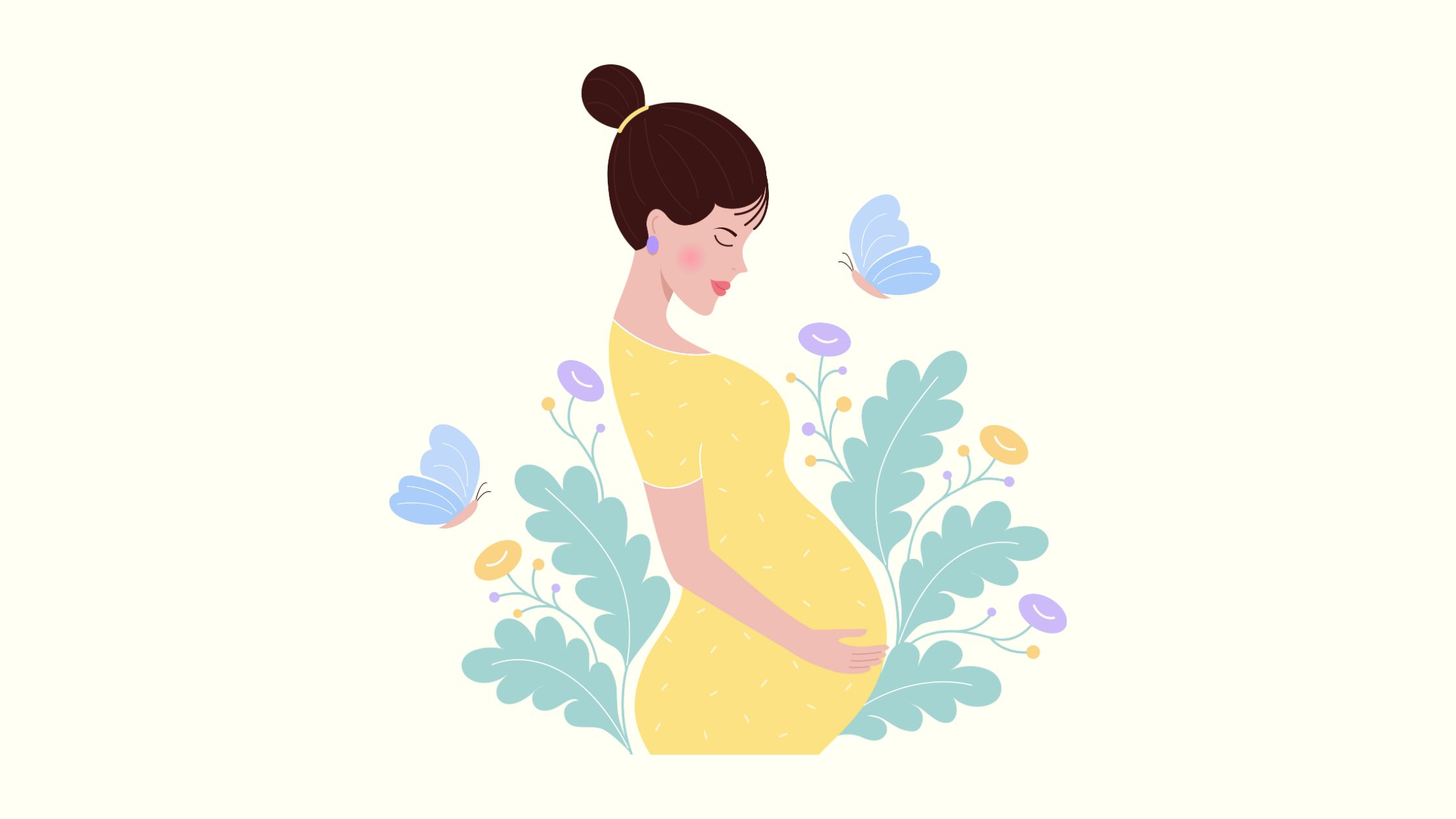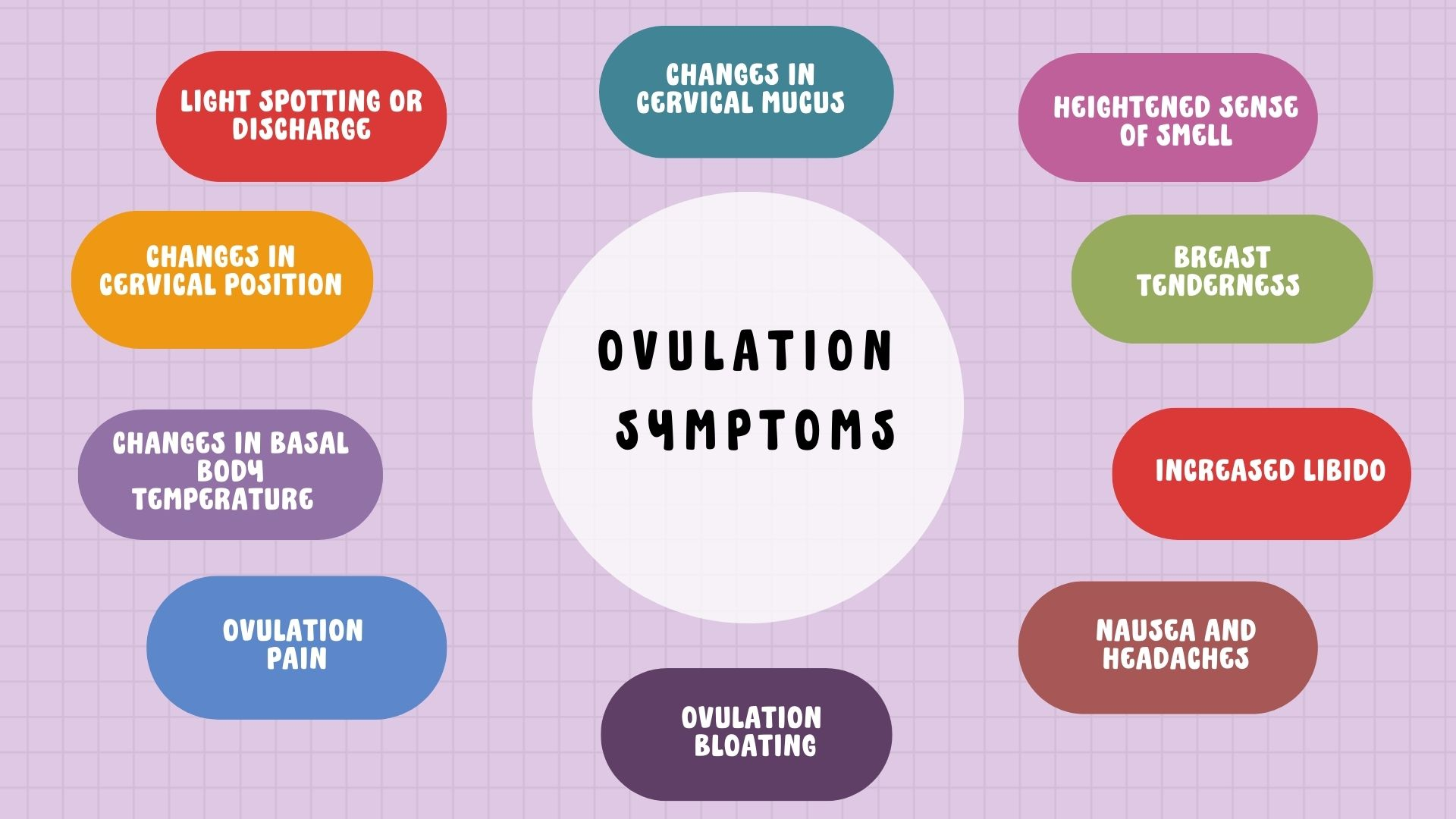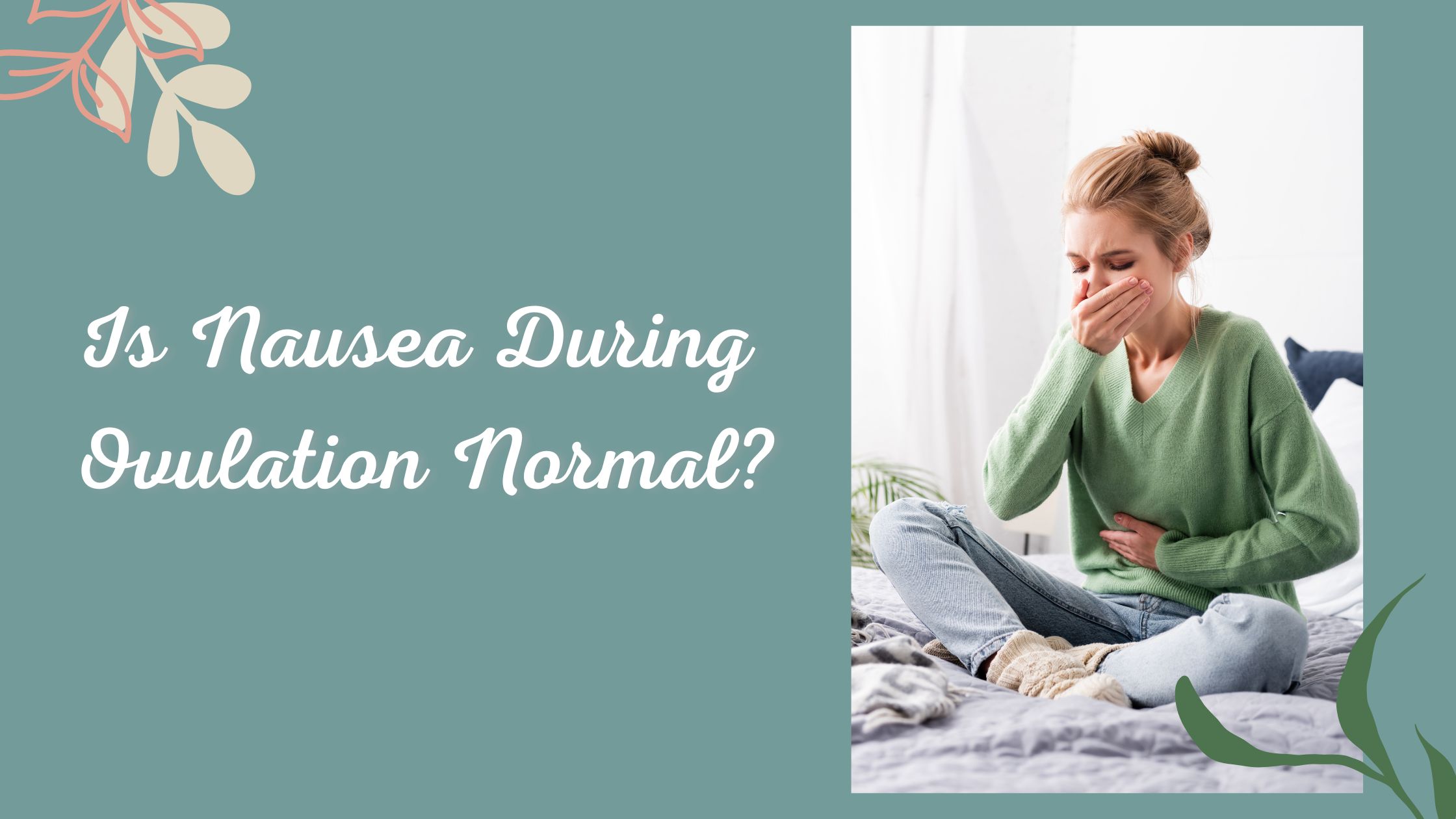While nausea is widely recognized as a common sign of pregnancy, some women also experience it while ovulating.
Feeling nauseous is a common ovulation symptom. Some women may feel like they are on the verge of throwing up.
So, let’s find out what ovulation nausea is all about, whether it’s a cause for concern, and what steps you can take to relieve it.
What is Ovulation?
Ovulation occurs approximately 14 days before menstruation during the middle of the menstrual cycle.
During ovulation, the ovarian follicle releases a mature egg. This egg then begins a journey from the ovary to the fallopian tube and ultimately to the uterus. Pregnancy commences if the egg is fertilized; otherwise, the egg survives for only 24 hours before continuing the next menstrual cycle.
Multiple fertility hormones ensure the ovulation cycle runs smoothly. These include follicle-stimulating hormone (FSH), estrogen, luteinizing hormone (LH), and progesterone. Each plays a crucial role in facilitating the ovulation cycle.
Causes of Nausea During Ovulation
You probably already know that the early stages of pregnancy often come with bouts of nausea and vomiting. This unpleasantness is usually courtesy of hormonal changes happening in your body.
The hormone known as human chorionic gonadotropin, or HCG for short, is produced by the placenta once you get pregnant. Studies suggest that the higher the levels of HCG in your system, the more likely you are to feel like you’ve spent the last hour on a roller coaster.
You might wonder why you feel nauseous during ovulation when no baby is on board.
Well, your menstrual cycle has its own set of hormones that take you for a ride. Think of it as your body’s hormonal roller coaster, with various twists and turns throughout your cycle. Estrogen and progesterone are the culprits behind the sickness you feel just before your period, during ovulation, and in early pregnancy.
For ovulation to occur, estrogen partners with another hormone called luteinizing hormone, or LH. When estrogen levels soar, LH makes its appearance, kickstarting ovulation. After you’ve ovulated, progesterone takes center stage, teaming up with estrogen to prepare your body for a potential baby.
These swift hormonal changes, particularly the surge in estrogen and LH, might be why you sometimes feel like your stomach is doing somersaults during ovulation.
And, let’s not forget that some women might even experience that dull or sharp abdominal pain during ovulation, called ‘mittelschmerz’. This, too, could be causing nausea during ovulation.
Additionally, if you’re popping fertility medication or certain pain relievers, your odds of experiencing nausea around ovulation might be slightly higher.
How Can I Relieve Nausea Around Ovulation?

Nausea during ovulation isn’t as commonly discussed as other ovulation symptoms, but experiencing it during your menstrual cycle is completely normal. It usually goes away on its own, but there are certain measures you can take to make it go away faster.
While specific scientific research supports practices focusing mostly on pregnancy-induced nausea, women experiencing nausea during ovulation can also benefit from these remedies.
If you’re dealing with this issue, there are several strategies you can try to relieve your discomfort.
1. Try Ginger
Ginger has been used for centuries to relieve nausea and vomiting. You can take it in various forms, like ginger tea, ginger chews, or even raw ginger.
Multiple studies back the effectiveness of ginger for nausea. For instance, research indicates that orally administered ginger has been found to reduce the frequency of vomiting and intensity of nausea significantly.
Similarly, the bioactive component in fresh ginger, gingerol, and related compounds are believed to contribute to ginger’s medicinal properties, including its effectiveness in reducing nausea.
It’s considered safe to use, but as with any supplement, it’s a good idea to check with your doctor.
2. Small, Frequent Meals
Eating small, frequent meals instead of larger ones can help calm your stomach and prevent nausea. This is also recommended for morning sickness during pregnancy.
3. Stay Hydrated
Keeping well-hydrated by drinking plenty of fluids can help, especially if your nausea has led to vomiting. Drinking fluids between meals rather than with meals can sometimes ease nausea too.
4. Avoid Triggers
If you notice certain foods or smells worsen your nausea, try to avoid them. Everyone’s triggers can differ, but common ones include strong odors, spicy or fatty foods, and caffeine.
5. Anti-Nausea Medications
Certain over-the-counter medications, like antihistamines or bismuth subsalicylate, can help alleviate nausea. However, these should only be taken with the advice of a healthcare provider.
If these strategies don’t help, or if your nausea is severe or accompanied by other concerning symptoms (like severe pain, fever, or vomiting), it’s important to seek medical attention. Your doctor can help identify the cause of your symptoms and recommend appropriate treatment options.
How Long Does Nausea Last During Ovulation?
While it is relatively common, the exact duration of nausea during ovulation can vary from person to person. It could last a few minutes or hours or intermittently throughout ovulation.
Ovulation typically occurs once a month, in the middle of the menstrual cycle, and lasts about 24 hours. However, nausea associated with ovulation could happen a few days before the actual release of the egg and may continue for some time after.
Is Nausea Around Ovulation Time a Sign of Pregnancy?

Nausea around ovulation is not a definitive sign of pregnancy. It can be a common symptom experienced due to hormonal changes that happen during ovulation. Ovulation symptoms may include nausea, changes in cervical mucus, cramps, abdominal pain, bloating, and breast tenderness.
On the other hand, nausea is a common early pregnancy symptom, often referred to as morning sickness. It’s associated with hormonal changes and increased blood volume in early pregnancy.
However, morning sickness generally appears after the first few weeks of conception. Therefore, it’s more common to experience noticeable signs a few weeks after ovulation, when human chorionic gonadotropin (hCG) levels begin to rise.
Pregnancy tests and ultrasound scans help confirm pregnancy. But, it’s best to wait until the first day of the missed period to take a pregnancy test for accurate results. If the test is negative, but there’s still suspicion of pregnancy, a blood test may be necessary for more accurate results.
Signs of Ovulation

Here is a comprehensive list of all the possible ovulation symptoms.
Changes in Cervical Mucus
During ovulation and around your fertile window, you experience a specific kind of vaginal discharge. As ovulation approaches, the cervical mucus becomes clear, stretchy, and copious, similar to egg whites. This change in the cervical mucus helps transport sperm to the mature egg. It’s similar to a biological signal, indicative of a peak fertility period. Many women use this as a natural method to track their cycle.
Changes in Cervical Position
During ovulation, your cervix – the lower, narrow end of the uterus – may become higher, softer, and more open. This adjustment, often called “SHOW” (Soft, High, Open, Wet), prepares the body for possible conception. Changes to the cervical position can be detected but require practice and familiarity with your body’s nuances.
Changes in Basal Body Temperature
Another ovulation symptom is a slight but detectable rise in basal body temperature (BBT), approximately 0.5 to 1.0 degrees Fahrenheit. This increase results from a surge in progesterone, a hormone that prepares the uterus for a potential pregnancy. Women often chart their BBT to understand their ovulatory pattern and predict future fertile windows.
Heightened Sense Of Smell
Some women report a sharp increase in olfactory sensitivity around ovulation. A study found that olfactory sensitivity does indeed vary throughout the menstrual cycle, with the lowest thresholds observed during ovulation. However, this symptom isn’t experienced universally.
Breast Tenderness or Soreness
Hormonal fluctuations during ovulation can cause temporary discomfort or sensitivity in the breasts. Specifically, the rise in progesterone and estrogen levels may induce this symptom. It’s important to know that breast tenderness varies among individuals, and for some, it may not serve as a reliable ovulation indicator.
Nausea and Headaches
Some women may experience nausea and headaches as a part of their ovulation symptoms, although this is less common. These symptoms occur due to the sudden change in estrogen levels during the release of the egg. While these symptoms can cause discomfort, they’re usually mild and brief, receding as hormone levels stabilize.
Ovulation Pain
Also known as “mittelschmerz,” a German word meaning “middle pain,” ovulation pain manifests as a mild twinge or cramp on one side of the lower abdomen. This discomfort occurs when the ovarian follicle ruptures to release an egg. Not all women experience this symptom, but those who do often use it as a natural indicator of ovulation. Birth control pills might be the best solution for those struggling with particularly painful ovulation and not currently trying to conceive.
Ovulation Bloating
Bloating during ovulation is largely attributable to water retention and increased blood flow to the pelvic region. The rise in estrogen and luteinizing hormone (LH) levels can exacerbate this symptom. It’s a temporary condition that typically subsides once menstruation begins.
Light Spotting or Discharge
Mid-cycle spotting, or “ovulation bleeding,” is a light blood discharge that can occur due to the follicle’s rupture during ovulation. It’s usually scant and brief, differentiating it from menstrual bleeding. While not a common occurrence, it’s normal and not a cause for concern.
Increased Sex Drive
Not every ovulation symptom is bad. Hormonal fluctuations, specifically the rise in estrogen levels during ovulation, can increase libido. This natural upswing aligns with the body’s fertility peak, serving as nature’s mechanism to enhance the chances of conception.
Signs That Ovulation Is Over
Monitoring your hormone levels and conducting periodic tests can be crucial in determining if ovulation has occurred. But what transpires when ovulation ceases?
The key point to understand is that after ovulation concludes, certain hormones—specifically estrogen and LH—decline significantly. Conversely, progesterone increases, priming your body for possible pregnancy, given that conception has occurred successfully.
However, if pregnancy does not occur during this cycle, the progesterone level will decline again.
To validate if ovulation has happened, it’s advisable to undergo a test to confirm the presence of progesterone in your system. The optimal time to conduct this test is approximately a week after your ovulation day. This is the period when your progesterone levels reach their peak, and elevated levels can signal successful ovulation.
Takeaway
- Nausea during ovulation is common and can make some women feel like they are on the verge of vomiting.
- Ovulation is when a mature egg is released from the ovarian follicle and begins a journey to the uterus. It is the most fertile period of a woman’s menstrual cycle.
- Hormones like follicle-stimulating hormone (FSH), estrogen, luteinizing hormone (LH), and progesterone are crucial for ovulation.
- Nausea during ovulation is likely due to hormonal changes, particularly the surge in estrogen and LH. Also, certain fertility medications or pain relievers might increase the chances of experiencing nausea around ovulation.
- Try remedies like ginger, small frequent meals, staying hydrated, avoiding triggers, and taking anti-nausea medications (with doctor’s advice) to relieve nausea around ovulation.
- The duration of nausea during ovulation can vary from a few minutes to hours or even throughout the period.
- Nausea during ovulation is not a definitive sign of pregnancy. It can be a common symptom due to hormonal changes that occur during ovulation.
- Signs of ovulations include changes in cervical mucus, cervical position, basal body temperature (BBT), heightened sense of smell, breast tenderness or soreness, nausea, headaches, severe ovulation pain, bloating, light spotting or discharge, and increased sex drive.
- After ovulation, the levels of estrogen and LH decline while progesterone increases, preparing the body for potential pregnancy.
References
Lee, N. M., & Saha, S. (2011). Nausea and vomiting during pregnancy. Gastroenterology clinics of North America, 40(2), 309–vii. https://doi.org/10.1016/j.gtc.2011.03.009Lete, I., & Allué, J. (2016). The Effectiveness of Ginger in the Prevention of Nausea and Vomiting during Pregnancy and Chemotherapy. Integrative medicine insights, 11, 11–17. https://doi.org/10.4137/IMI.S36273Giacosa, A., Morazzoni, P., Bombardelli, E., Riva, A., Bianchi Porro, G., & Rondanelli, M. (2015). Can nausea and vomiting be treated with ginger extract? European Review for medical and pharmacological sciences, 19(7), 1291–1296.Mayo Clinic. (n.d.). 1st-trimester pregnancy: What to expect. Mar. 8, 2022, from https://www.mayoclinic.org/diseases-conditions/mittelschmerz/symptoms-causes/syc-20375122No Author. (n.d.). Cervical Mucus. Cleveland Clinic. Retrieved July 17, 2023, from https://my.clevelandclinic.org/health/body/21957-cervical-mucusNavarrete-Palacios, E., Hudson, R., Reyes-Guerrero, G., & Guevara-Guzmán, R. (2003). Lower olfactory threshold during the ovulatory phase of the menstrual cycle. Biological Psychology, 63(3), 269-279. doi.org/10.1016/S0301-0511(03)00076-0
